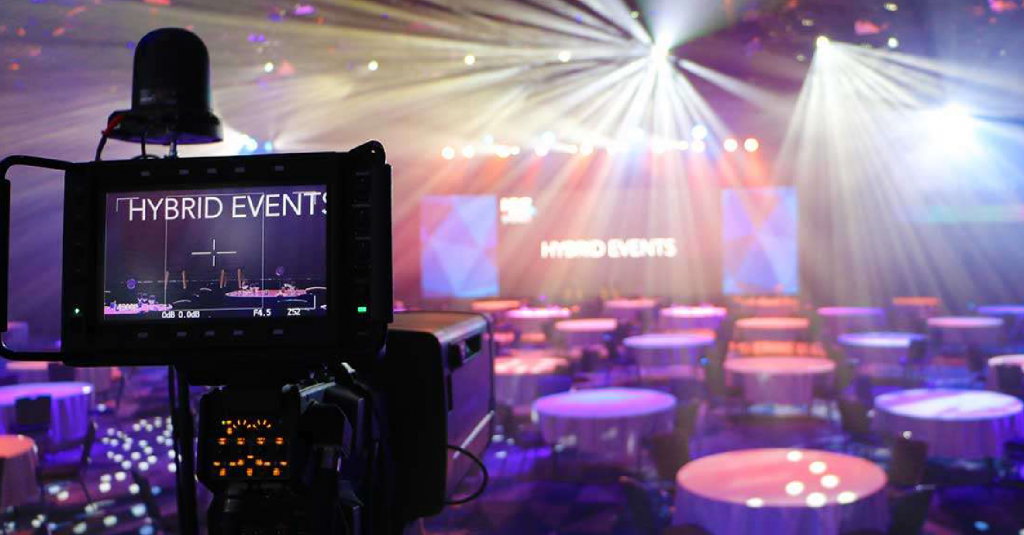Skilled Event Professionals at Your Event Source Charlotte Near You.
Why Event Source Solutions Are Necessary for Smooth Event-Driven Designs
In the world of modern software program development, event-driven architectures are significantly prevalent, yet their efficiency pivots on the implementation of durable event resource solutions. As markets change towards real-time information processing, recognizing the implications of event sourcing comes to be essential.
Recognizing Event-Driven Architectures
Event-driven architectures (EDAs) represent a paradigm shift in developing software application systems, where the circulation of details is identified by the incident of events. This architectural style promotes a decoupled strategy, allowing different components to communicate asynchronously. In EDAs, events work as the key ways of interaction, setting off processes or process in response to specific occurrences, such as user activities or system adjustments.
The secret elements of an EDA include event manufacturers, which create events; event consumers, which respond to occasions; and occasion channels, which assist in the transmission of occasions in between manufacturers and customers. This framework enhances system responsiveness and scalability, as parts can individually refine events without the demand for simultaneous interaction.
Additionally, EDAs allow real-time data processing, making them ideal for applications calling for instant insights-- such as fraudulence discovery in economic systems or monitoring IoT tools. They additionally support an even more dexterous advancement atmosphere, allowing groups to repeat rapidly and release brand-new features with marginal disturbance to existing services.
The Role of Occasion Source Solutions
While different parts in an event-driven style depend on effective interaction, event resource remedies play a crucial function in generating and handling the flow of occasions. These services act as the preliminary factor of event production, catching changes in state or individual activities and equating them right into events that can be propagated with the system.

In addition, they facilitate the decoupling of producers and consumers within a design, enabling systems to scale independently. This decoupling is vital for improving system durability, as it lessens reliances that might otherwise lead to bottlenecks or single points of failure.
Benefits of Real-Time Information Handling
Real-time information handling dramatically boosts the abilities of event-driven styles by enabling prompt understandings and activities based on the current information (your event source charlotte). This immediacy not only increases decision-making however additionally enhances the significance and precision of those decisions. Organizations can reply to occasions as they happen, lowering latency and boosting operational agility
Among the main benefits of real-time information processing is the ability to record and analyze data continually. This assists in proactive measures instead of responsive reactions, permitting services to anticipate fads and possible problems before they rise. For instance, in fields such as financing or ecommerce, real-time analytics can determine deceptive purchases or client actions modifications, allowing quick interventions that Related Site minimize risk and maximize customer fulfillment.

Ultimately, the assimilation of real-time information handling into event-driven designs equips organizations to harness the complete possibility of their information, driving development and competitive advantage in an increasingly vibrant industry.
Enhancing System Communication
Effective interaction in between systems is vital for the success of any type of event-driven design. Event source remedies facilitate this interaction by offering a robust structure for catching and transferring events in actual time. By standardizing how systems create Look At This and take in events, these remedies get rid of ambiguity and foster interoperability, permitting disparate systems to collaborate perfectly.
Using event streams makes it possible for systems to respond promptly to adjustments, making sure that all components are straightened and informed. This responsiveness is crucial in atmospheres where timely data exchange straight impacts decision-making and total system performance. Event resource solutions provide devices for event filtering, makeover, and routing, improving the performance of data flow in between systems.
Additionally, by executing a publish-subscribe version, occasion source services decouple system elements, enabling higher adaptability and scalability. This decoupling means that systems can develop separately, making it less complicated to integrate new capabilities or change existing components without disrupting general interaction.
Future Trends in Occasion Sourcing


One more significant fad is the rise of cloud-native occasion sourcing options. These platforms take advantage of the scalability and versatility of cloud framework, allowing organizations to efficiently manage and keep huge quantities of event data without the overhead of typical systems. This change promotes greater availability and partnership across teams.
Furthermore, the fostering of microservices design is affecting event sourcing practices. As companies progressively section their applications into smaller, independent services, occasion sourcing gives a durable device to preserve data consistency and stability across these dispersed systems.
Conclusion
In conclusion, occasion resource remedies work as an essential structure for seamless event-driven designs, allowing reliable event generation and monitoring. By helping with asynchronous interaction in between find more information parts, these remedies boost system strength and promote the independent evolution of solutions. The advantages of real-time information handling and boosted system interaction emphasize the importance of embracing occasion sourcing approaches. As the need for durable distributed systems boosts, the significance of occasion resource services will continue to expand, shaping the future of event-driven style.